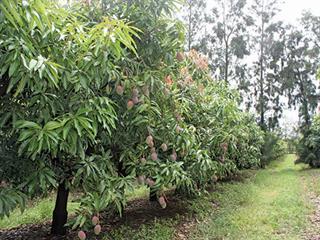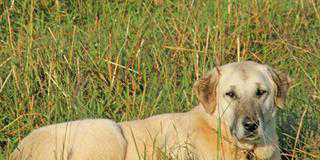
Mango malformation disease (MMD) is the world’s most destructive mango disease. Sometimes called the ‘polio of the mango production sector’, it is spreading swiftly through the mango-growing areas of South Africa. MMD, a fungal infection, causes abnormal flower and leaf development, resulting in reduced plant growth and fruit yield. According to a paper by Dr Wilma Augustyn, a researcher in the department of chemistry at the Tshwane University of Technology, various factors play a role in the severity of the disease. These include prevailing temperatures, the tree’s age, and the timing of bud formation.
In the article, “Metabolic Profiling of Mango Cultivars to Identify Biomarkers for Resistance Against Fusarium Infection” published in the Phytochemistry Letters journal, Augustyn writes that infection of mango panicles and young leaf shoots by a Fusarium fungus significantly reduces fruit yield. Some mango cultivars are known to be resistant to blossom malformation, while others are highly susceptible. “Previous researchers linked the ability of certain cultivars to confine Fusarium infection to high levels of mangiferin,” she explains.
READ MORE: Proven Mango success
According to Augustyn, MMD is currently the most critical disease affecting mango production worldwide. “It is characterised by gross deformation of the inflorescences and vegetative shoots of the tree, with a consequent inability of affected panicles to yield fruit. A number of biotic and abiotic factors, including viral and fungal infections and excessive ethylene production under conditions of stress, have been associated with the disease. However, the main cause of MMD is attributed to infection by Fusarium,” she said.
Causative agents
Although several Fusarium fungi have been linked to blossom malformation, Fusarium mangiferae and F. sterilihyphosum are thought to be the causative agents in South Africa. Late-blooming cultivars are less susceptible to MMD than those flowering early or mid-season. MMD is also more prevalent during years in which the trees bloom abundantly.
“Although most cultivars are susceptible to infection, a few display some degree of tolerance. Only a handful of cultivars, for example ‘Bhadauran’ and ‘Elaichi’, have been identified as being resistant to the disease,” says Augustyn. ‘Roza’ is the only cultivar in South Africa that appears to be entirely free of MMD. Over millions of years, plants have developed tailor-made defence mechanisms in response to specific pathogens or herbivores. Morphological and biochemical changes in mango presenting with MMD have been linked to an increased production of secondary metabolites in response to infection.
“Although the levels of phenolic compounds were found to be higher in malformed vegetation than in healthy plants, the levels also depend on the cultivar and climatic conditions. Plant metabolites, including compounds such as enzymes, may be involved in the resistance of certain mango cultivars to MMD,” says Augustyn.
MMD in South Africa
MMD was first reported in India in 1891 and today occurs in Asia, Africa, and the Americas. By world standards, the South African mango industry is small, but generally manages to hold its own against the big players. According to the South African Mango Growers’ Association, the country’s mango production was just under 51 000t in the 2013/14 production year. The highest volume of mangoes produced during the last decade was 89 464t in the 2004/2005 season.
Symptoms
Abnormal, compact development of shoots and flowers are common signs of MMD. Both normal and MMD-affected growth are sometimes present on a plant at the same time. Growth tips such as leaf and stem buds produce misshapen shoots with short internodes and brittle leaves. The leaves are also significantly smaller than on healthy plants and curve backwards towards the stem, giving a squat, ‘bunchy-top’ appearance.
READ MORE: Making organic fruit farming work
Although shoot damage occurs in mature trees, infection is particularly serious for young plants, which become severely stunted. Affected flower stems or panicles become thickened and highly branched, producing up to three times the normal number of flowers. Flowers are enlarged, sterile and do not bear fruit. High numbers of male flowers are often present, and panicles may also form dwarfed and distorted leaves.
Floral malformation, in contrast to vegetative malformation, is highly virulent and can cause the loss of an entire crop. Affected panicles either do not set fruit or abort fruit shortly after setting, and yield can be reduced by as much as 80%.
Phone Dr Wilma Augustyn on 012 382 6127 or email [email protected].













